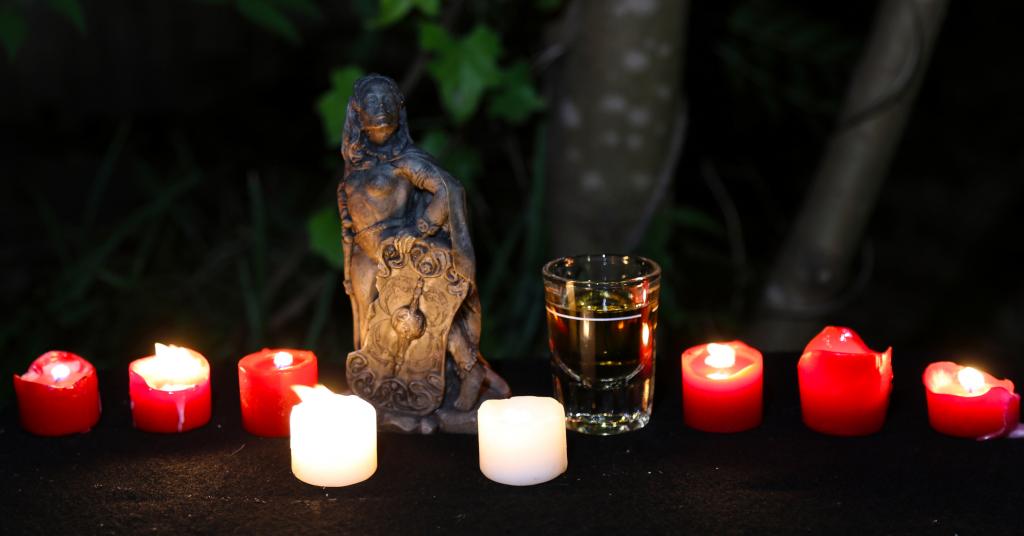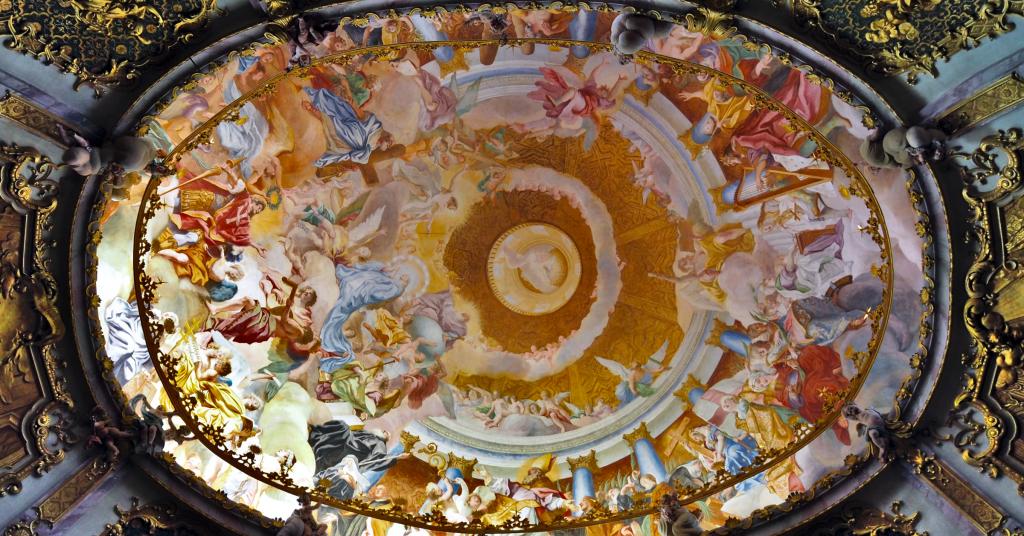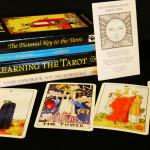I like 1940s Big Band music. My interest is relatively mild but it’s been persistent throughout my life. I still have a couple Glenn Miller cassettes I bought in my teens, and one of the slots on my satellite radio is set to 40s Junction.
I was flipping through the channels a few days ago and paused to listen to a song I whose title I forgot as soon as it finished. It was a happy lively song about what the cool kids were doing, but in the midst of all the trombones and 40s slang was a line about “B-29s over Tokyo.”
Even the cool kids knew there was a war to be won.
We all know the Nazis burned books, but they also burned art they considered “figments of insanity, of audacity, of good-for-nothingness and degeneration.” Just last week China banned “effeminate men” on television and called for broadcasters to “vigorously promote excellent Chinese traditional culture, revolutionary culture and advanced socialist culture.” Repressive governments understand the power of art.
So do artists. The 1960s movement for civil rights and to end the war in Vietnam was aided by protest songs. The drive for LGBTQ rights continues to be aided by visibility and representation in entertainment.
We look at the direction of the world and we don’t like what we see. We do what we can to deal with it: we take care our ourselves and our loved ones. But many of us want to do more. We want to do something to make the world a better place, and we don’t have the power or the resources to accomplish big goals.
We can work together – big goals require collaboration. We can participate in the political process – we voted Trump out of office and we can vote others out as well.
But one of the most effective things any of us can do – something that can extend our influence far beyond our small circles of friends and acquaintances – is to make good art. And by “art” I mean anything in the general realm of the arts: music, poetry, painting, photography, filmmaking, story writing and story telling, and anything else along these general lines.

Never bring data to a story fight
For those of us who grew up with a strong respect for science and logic, this is heresy. I make my living as an engineer, where one of the clichés is “the data drives the decision.” The Covid pandemic has shown what happens when leaders don’t follow the data.
And none of that matters when you’re trying to win hearts and minds.
Study after study has shown that when you present people with facts that contradict their opinions – especially strongly held religious and political opinions – they dismiss or deny the facts and double down on their beliefs. Their opinions are part of their identity, and most people aren’t willing to even consider such a fundamental change.
It’s worse if you ask them to do something that isn’t in their immediate self-interest. That’s why so many people deny the evidence for climate change, even though it’s overwhelming.
There’s a place for data and data analysis. I want scientists and engineers to play close attention to it. In government, I want “policy wonks” running departments and writing legislation. But I don’t want them running for elected office, because they’ll lose to people who can tell better stories.
Art is best when it tells stories, no matter the medium that’s used. When it tries to build a logical case, it fails.

If you’re explaining, you’re losing
Former President Ronald Reagan famously said “if you’re explaining, you’re losing.” Reagan did immense harm to the country with his attacks on labor and his drive to privatize public services. But he was able to do that because he was “the Great Communicator.” His speeches were simple, black and white, and told people what they wanted to hear. And he repeated his key points over and over again: he said “your message eventually will sink into the collective consciousness of the people.”
This is hard for me. I like to explain – and I like for people to explain things to me. But I have a sympathetic audience here on the blog – the people who don’t agree with my foundational concepts simply don’t read what I write.
The further I go from that sympathetic audience the more I have to speak in stories, metaphors, and images – the more I have to speak indirectly.
You can’t beat people over the head with the truth and expect to win. Rather, help them feel the truth so they’ll accept the truth in their own time.
Make people feel
Say what you will about Reagan – and there is much to say – he made people feel good about their country. He talked about “a shining city on a hill” and “morning in America.” He issued a challenge in Berlin that made people feel good: “Mr. Gorbachev, tear down this wall!”
Donald Trump made people feel too (is it too early to talk about Trump in the past sense? Probably, but I like doing it), but he focused on how bad things are and insisted “I alone can fix it.” Fear is a big motivator.
Good stories make people feel.
One film critic calls the “La Marseillaise” scene in Casablanca “cinema’s greatest scene.” Nazis are in Rick’s café singing a German beer drinking song. Resistance leader Victor Laszlo orders the band to play “La Marseillaise” – the French national anthem. By the end of the song everyone is singing along, drowning out the Nazis – and growing more ready to oppose them.
Casablanca was released in November 1942. The U.S. had been in World War II for less than a year and victory was far from certain. The cinematic storytelling made the domestic audiences feel hope and resolve too.
Whatever your medium, make people feel something.
Leave preaching to the preachers
I like good preaching. I do a little preaching myself, sometimes here on the blog and sometimes in actual pulpits in actual churches. Good preaching can make people feel something too.
But stereotypical low-church Protestant expository preaching isn’t art. Again, if you’re explaining, you’re losing. If you’re trying to build a case like a TV lawyer, you’re losing. If you’re telling people all the things they should be doing and how it’s going to be their fault if they don’t, you’re really losing.
Hell-fire sermons (whether religious, political, environmental, or anything else) don’t change people’s hearts and minds – they don’t convert anyone. Rather, they keep those who already think and believe the “right” things in line. And they boost the egos of self-important preachers.
Make your art and leave preaching to the preachers.
Quality matters, but so does passion
The Christian art of the Middle Ages and the Renaissance is amazing, even to me as a Pagan. It should be – it was made by the best artists and paid for by the wealthiest and most influential patrons. Most of what passes for Christian art today – especially Christian filmmaking – is clichéd stories presented by second and third rate writers, actors, directors, and such.
Don’t get me started on some of the Pagan music of previous decades.
I don’t want to criticize people who make amateur and semi-professional art as an act of devotion. Devotion done from the heart is pleasing to the Gods, no matter how unskillful it may be. It’s a good way to honor Them and to connect to Them. But private and small-group devotion is one thing – art intended to inspire a resistance and topple the patriarchy is something quite different.
Study the masters of your art. Work on your craft. Practice, practice, practice.

But also remember that while enthusiasm is no substitute for competence, competence is no substitute for enthusiasm. If what you create ends up looking and sounding like punk rock, that can be inspiring too. The Sex Pistols are in the Rock and Roll Hall of Fame and rightly so – even though they refused to attend their induction, because Halls of Fame aren’t very punk rock.
Do what you can do
My mother was a professional airbrush artist, doing portrait reproductions in the pre-PhotoShop era. She also drew and painted very well (and still does, at age 90). I inherited none of her talent – and I did try. I have a good ear for music, but I can’t sing or play.
But I can write. Some of that is talent, more of it is practice – a lifetime of practice. And so I write.
Some who will read this post are professional singers, songwriters, painters, photographers, filmmakers, storytellers, novelists, poets, and more. The beacons are lit – Gondor calls for aid. Give people a vision of a better world.
But you don’t have to be a professional artist to make good art. You just have to do what you can do.
What stories can you tell? What songs can you sing? What pictures can you draw or paint or photograph?
What are your skills? Where is your passion?
What is your vision? Share it with the rest of the world.
Make good art.
After I finished writing this post, I googled the phrase “make good art” just to see what else has been written on the topic. The entire first page of results were various accounts of a 2012 commencement speech given by none other than Neil Gaiman, who knows more about making good art than I ever will.
If I haven’t convinced you, perhaps Mr. Gaiman will.
















